#James Berwick
Explore tagged Tumblr posts
Text






New Scotland Yard: Ask No Questions (1.11, LWT, 1972)
"What's your real reservation? The girl was pregnant, on hard drugs -"
"And she was taking her O-Levels into the bargain. None of which adds up to a reason to throw her onto a heap of stinking garbage."
"So, we're back to that: sentiment. Lily on a dung heap, you don't like it."
"Look. Between here and that dump, there's a small copse - dark, secluded. Now, if Harris, or anybody else for that matter, wanted to get rid of the girl's body, why not dump it there; easiest thing in the world, but no, he drove on, deliberately. An act of contempt. Rubbish to rubbish."
#new scotland yard#ask no questions#lwt#classic tv#oliver horsbrugh#lewis greifer#john woodvine#john carlisle#tenniel evans#david horovitch#liz gebhardt#madeleine newbury#simon gough#james berwick#jimmy gardner#robert gillespie#sara coward#colin rix#geoffrey russell#tony aitken#trevor byfield#sigh... it's a hippy episode. p much every uk cop drama from the late 60s through the 70s at one point or another tried to make a#counter culture themed episode‚ and they're pretty much all terrible. this isn't the worst of them by a long chalk but any scene involving#beatnik characters is inherently cringeworthy and the dialogue frequently awful. oh well. the actual plot saves it a little by providing#some unexpected (and actually quite complex) red herrings and misdirection. also worth noting‚ the copy of this ep that i watched on YT#features a few moments of quite substantial damage to the footage‚ tho whether that's an issue from the version the uploader used#or whether that damage is present on the negative itself i couldn't tell you. nice to see Tenniel Evans‚ a much under appreciated#character actor of the period‚ getting a meaty role to play with. and Bob Gillespie turns up to do what he does best (play a creepy weirdo#who speaks in unnaturally hushed tones). a so so episode but be prepared for awful hippy talk (or should I say a middle class tv writer's#approximation of what a hippy sounds like; one can only assume he'd never in his life heard one speak)
1 note
·
View note
Text

We've had so many great guests over the years! 💪
Be sure to check our archives!
Podbean: https://thefreethoughtproject.podbean.com/
Spotify: https://open.spotify.com/show/0GgAWBUgFds46kR9CbHUeS
Apple Podcasts: https://podcasts.apple.com/us/podcast/the-free-thought-project-podcast/id1439014279
#TheFreeThoughtProjectPodcast
#the free thought project#tftp#podcast#the free thought project podcast#james corbett#larken rose#tom woods#mark passio#ben swann#jeff berwick#cody wilson#ron paul#dr robert malone#gavin nascimento#rachel blevins#maj toure#whitney webb
1 note
·
View note
Text
Fall is here in northern Utah…🍁🏔️🍁




#utah#mature style#classic menswear#classic style#vintage style#fall#autumn vibes#autumn#tweed#tweed weather#tweed jacket#sunday best#robert stock#brooks brothers#huddersfield#berwick shoes#suede loafers#mens loafers#loafers#penny loafers#celchuk#celchuk socks#Jaxon and James#harris tweed#ivy hat#brown#French cuffs#turnback cuffs#cuffart#cuff links
0 notes
Text

Philip V Imposing the Golden Fleece on Marshal Berwick - Jean-Auguste Dominique Ingres.
For more information regarding this painting:


#visual#felipe v de españa#philip v of spain#bourbon-anjou#james fitz-james stuart duke of berwick#duke of berwick#should i guess giulio alberoni appears there too ?
0 notes
Text
Fantasy Guide to Dukes and Duchesses

This new series will offer an indepth view of each noble title in the standard European hierarchy of noble titles. Here we will discuss what they are, their lands, their jobs and everything you need to know when writing them.
What is a Duke exactly?

A Dukedom is the highest rank in most noble hierarchies. The Duke rules a section of land within the Kingdom known as a Duchy, for example the Duke of Lancaster or can be a standalone title, Duke of Rothesay. A Dukedom is inherited through the family line, from father to so but the title is bestowed on the by the monarch. Monarchs can also give their children Dukedoms, and often do. For example the second son of the King of France would be the Duc d'Orleans.
Titles, Titles
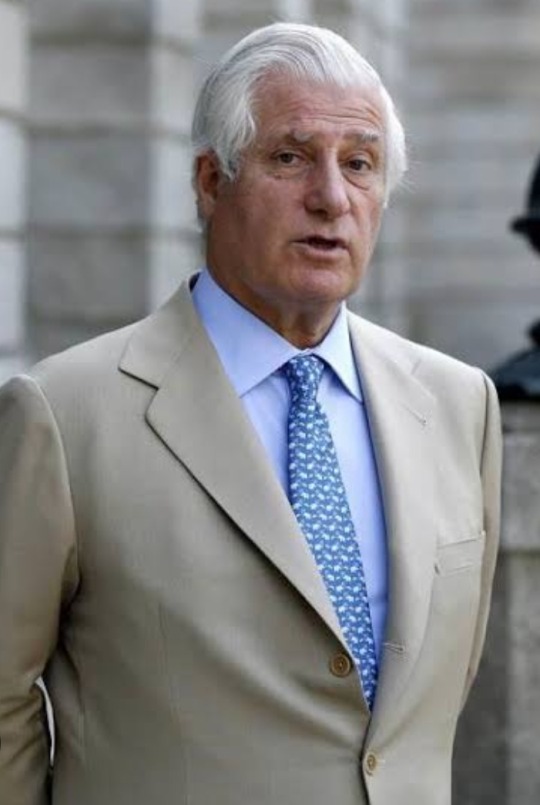
The Duke is the highest ranking in the land. They are the first among the nobility, among the wealthiest, with the most prestige. A Duke is referred to as 'Your Grace'. If one is meeting a Duke in a social setting, nobles would call them Duke whilst underlyings would call them "Your Grace". A Duke would also hold subsidiary such as an Earldom or two, a Barony or three. But would go by Duke as it is the highest title. Fun fact, Carlos Fitz-James Stuart (pic above) has the most titles:
He is: Carlos Fitz-James Stuart, Duke of Alba, Grandee of Spain, Duke of Berwick, Grandee of Spain, Duke of Huéscar, Grandee of Spain, Duke of Liria and Jérica, Grandee of Spain, Count-Duke of Olivares, Grandee of Spain,Marquess of Carpio, Grandee of Spain, Marquess of La Algaba, Marquess of Barcarrota, Marquess of Castañeda, Marquess of Coria, Marquess of Eliche, Marquess of Mirallo, Marquess of la Mota, Marquess of Moya, Marquess of Osera, Marquess of San Leonardo, Marquess of Sarria, Marquess of Tarazona, Marquess of Valdunquillo, Marquess of Villanueva del Fresno, Marquess of Villanueva del Río, Count of Lemos, Grandee of Spain, Count of Lerín, Grandee of Spain, Constable of Navarre, Count of Miranda del Castañar, Grandee of Spain, Count of Monterrey, Grandee of Spain, Count of Osorno, Grandee of Spain, Count of Andrade, Count of Ayala, Count of Casarrubios del Monte, Count of Fuentes de Valdepero, Count of Fuentidueña, Count of Galve, Count of Elves, Count of Modica, Count of San Esteban de Gormaz, Count of Santa Cruz de la Sierra, Count of Villalba, Viscount of la Calzada, Lord of Moguer.
The Family of the Duke
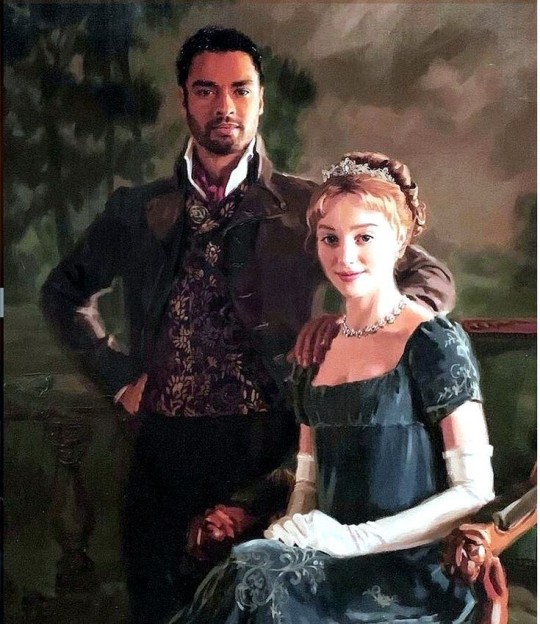
The wife of a Duke is a Duchess. If a Duke is married to a man, while there is no real world examples, I would personally say they would take one of those other subsidiary titles I mentioned above. Same thing with a ruling Duchess and her wife. However, a ruling Duchess's husband usually sticks with whatever title he came with. The heir of the Duke usually inherits their parent's next highest title, usually an Earldom. The other children are styled as Lord/Lady Firstname.
The Role of the Duke
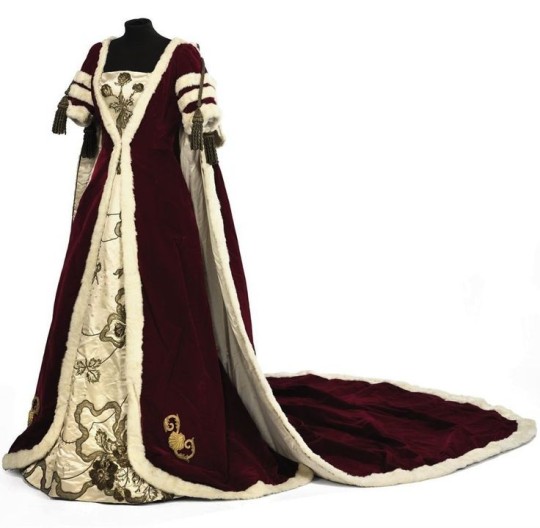
As the Duke is leader of the Duchy, which is a large section of the kingdom. They are in control of this section, the highest power in law and order, politics and all things in that section with only the monarch above. They handle administration at the highest level, raising troops from their duchy for the crown in times of war, see the collection of taxes and sometimes they might even advise the monarch if they are offered a place of the monarch's council. They would also attend the monarch at their coronation.
Cribs
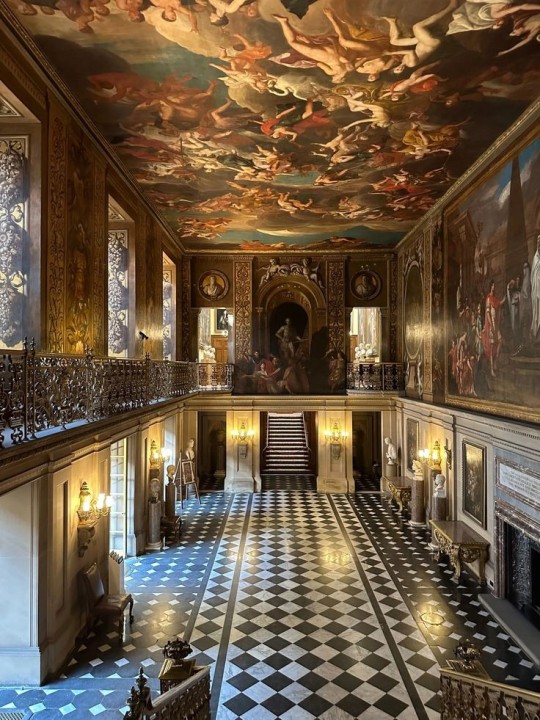
Dukes like a lot of nobility would have multiple houses, manors, estates etc. Their homes would be the grandest in the land and the social hubs for the Duchy and even the country. A Duke would sometimes live at court when invited but would also have the homes in the capital. This vast portfolio can become a source of income as the Duke can rent them out or a handy way to shelf relatives who depended on them.
#Fantasy Guide to Dukes and Duchesses#Dukes#Duchesses#Duke#Duchess#Fantasy Guide#Fantasy Guide to noblity#Nobles#Noble titles#Nobility#Titles#writing#writeblr#writing resources#writing reference#writer's problems#writer#writing reference writing resources#writing resources writing reference
365 notes
·
View notes
Text
A Good Omens trip to London
The opportunity to see Michael Sheen live in Nye at the National Theatre made me plan a trip to London. And having seen the tourist attractions already many years ago, I decided I would dive into the Good Omens experience – go crazy, nobody knows you there! 😀 Easy planning thanks to @fuckyeahgoodomens and the filming locations masterpost ❤️
After four fantastic days I can only say: what a lovely fandom! It was great to meet a few of you :)
In St. James's Park, at the bench, I met a fan from Romania.
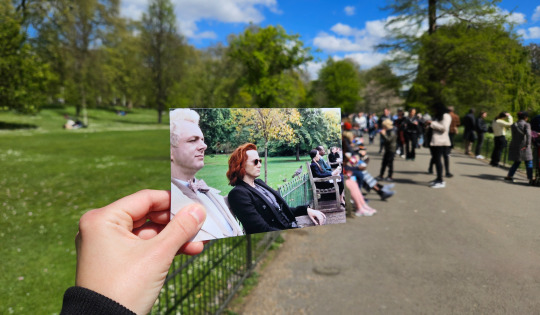
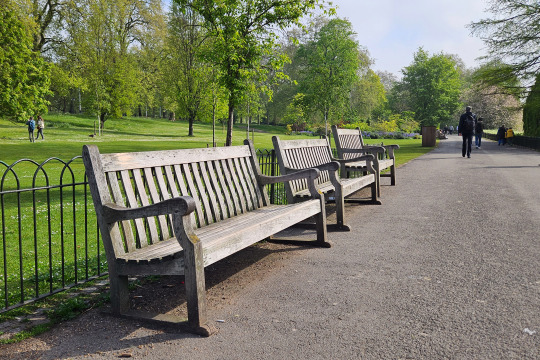
At the bandstand in Battersea Park I met a fan from Scotland and found the lovely fan art by @aydracz.
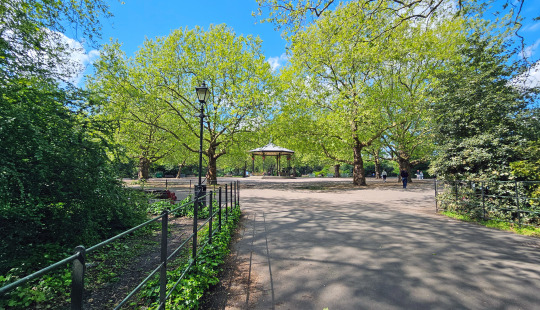

In Tavistock Square (Berkeley Square in the series) I met two fans from the Netherlands. (If you read this by any chance, I hope you enjoyed Nye!)
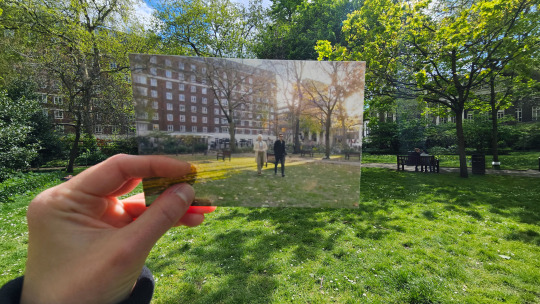
And then it seems all the fans in London that day gather at the theatre. 😀 – greetings to @kittensceilidh and @brandiwein1982
And well, how exciting to see Nye! It was entertaining, beautiful and touching. And Michael Sheen really is a wonderful and kind person – I very much hope I will meet him again. 🤗

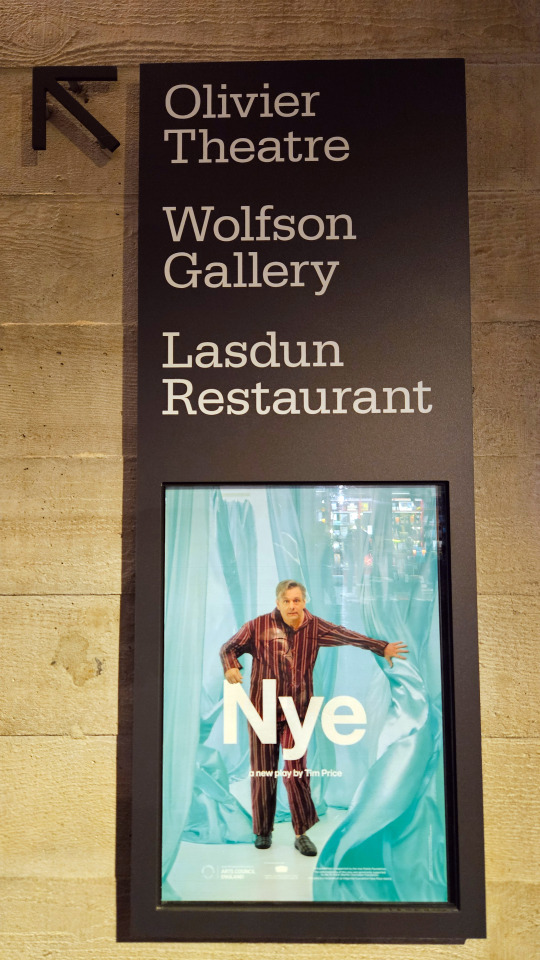


Be kind to each other and take care!
And if you are interested or need a bit of inspiration for your trip, here are some more impressions. I will have to go to London again and continue the experience :)
Shakespeare’s Globe
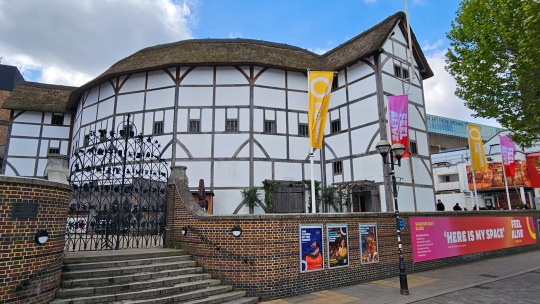

Duke of York Monument


The Ritz
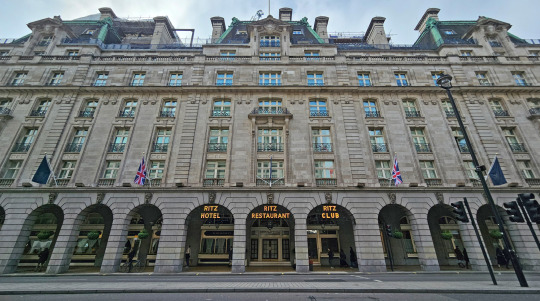
Berwick Street in Soho

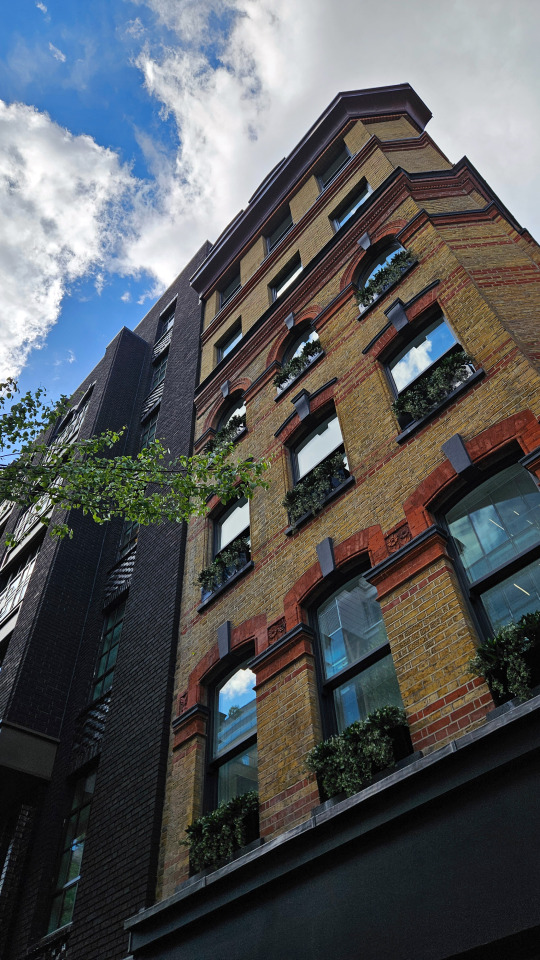
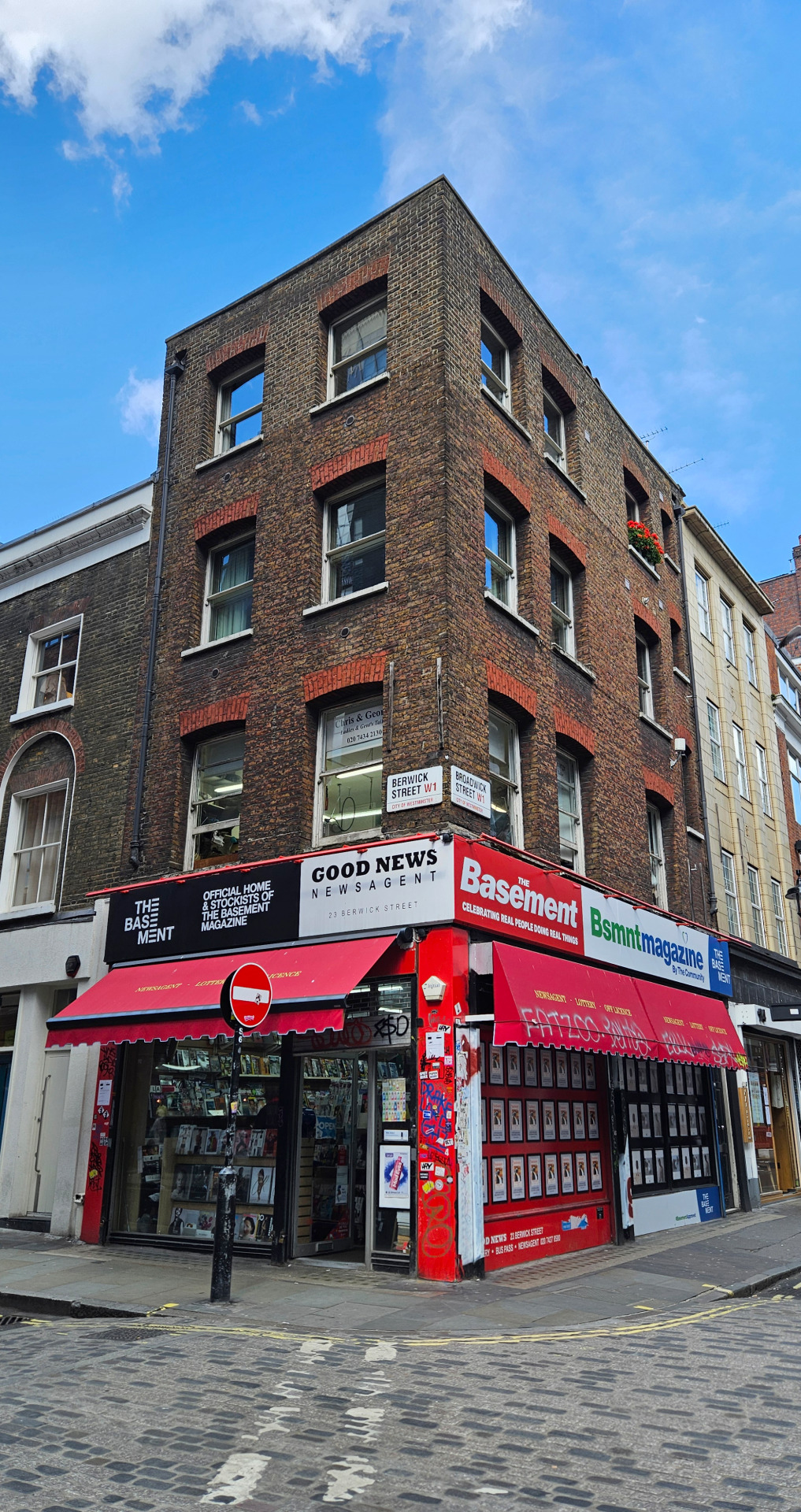
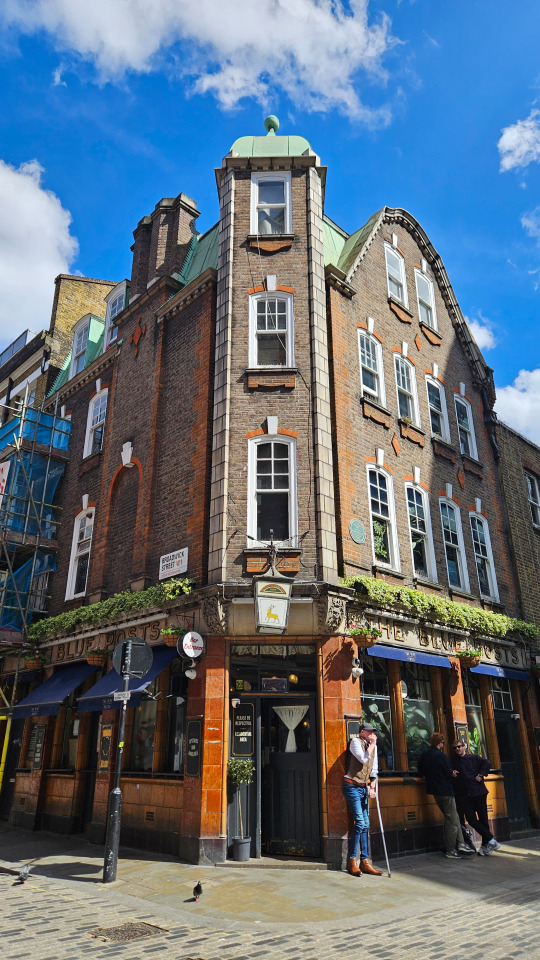
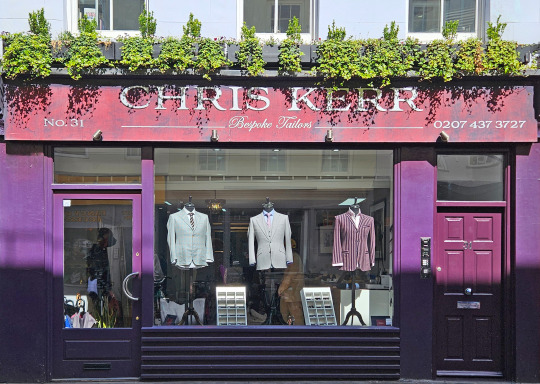


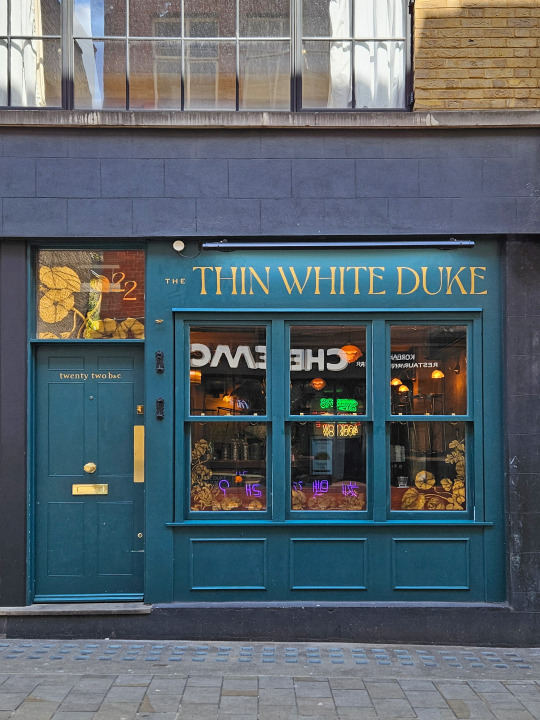
586 notes
·
View notes
Text
Good Omens London Trip 🐍💞🪽
It's my Birthday today and I treated myself to a trip to London last weekend to see my favourite actor Michael Sheen in Nye at the National Theatre. I made the most of my weekend by combining it with a Good Omens filming location self-tour and I'd love to share it with you all. So, are you ready for the tour?
Here we go!
Starting off with Soho, and the inspiration for Whickber Street, where Aziraphale's bookshop, Give Me Coffee or Give Me Death, The Small Back Room, and the Dirty Donkey are located.
It’s Berwick Street and a record shop that is very similar in shape to A.Z Fell & Co. Bonus points for spotting Duck Lane!


Next is Berkeley Square, a short walk from Soho. The first two photos are of the real Berkeley Square gardens in Mayfair, and the last two photos were taken in the filming location of Tavistock Square across the other side of central London near Kings Cross. I’m sitting on their ‘body swap’ bench in the last photo!
As you can see, the benches are turned around facing inwards now but are the other way, facing outwards in Good Omens.
Oh, and I can confirm that there were no nightingales singing in either location 😭


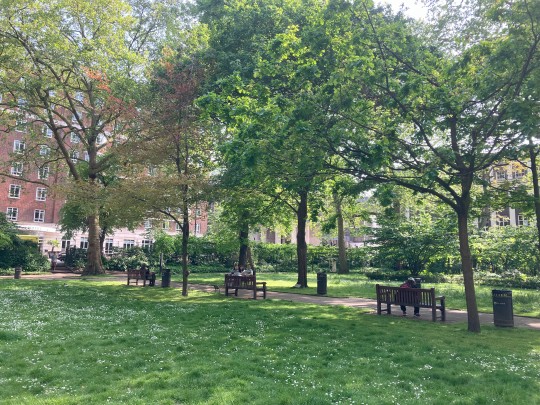

Heading up the road a few minutes from Tavistock Square to The Enterprise pub where I met a fellow fan who kindly took photos of me posing (I bet the staff thought we were off our rockers!). This is where Crowley drowns his sorrows in Talisker Whisky whilst waiting for the world to end after thinking he'd lost Aziraphale. Omg that poor poor demon, he was really just gonna die along with the world.
Also, one of my favourite moments of season 1 is Crolwey's line: "I heard that. It was the wiggle-on..." then shrugs. 😆 So many emotions in such short a time.

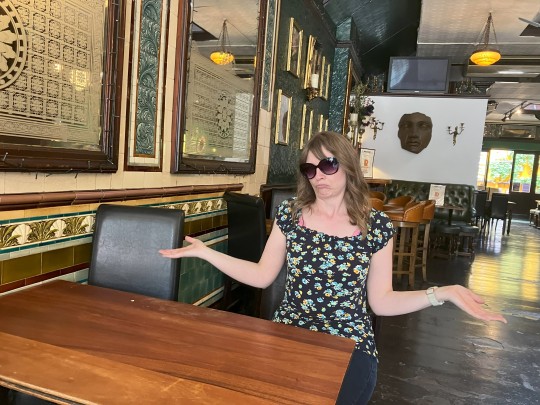
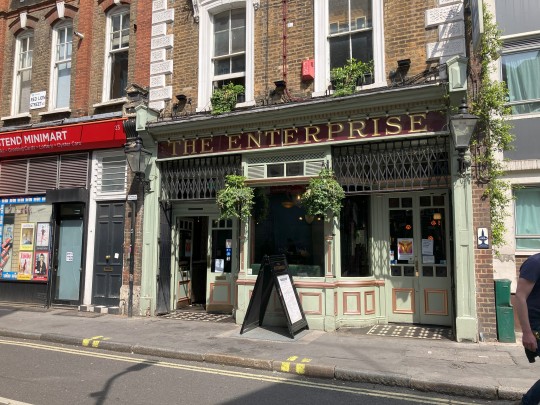

Onto the Ritz. The first two photos are of the real Ritz (a stone's throw from Berkeley Square) and the last one is inside Masala Zone in Piccadilly Circus where the ‘Quite extraordinary amounts of alcohol’ and ‘To the World’ scenes were filmed.
I ate in here alone to get the photo and was so lucky with the table I was given! Perfect discreet snap whilst eating my curry! Haha!
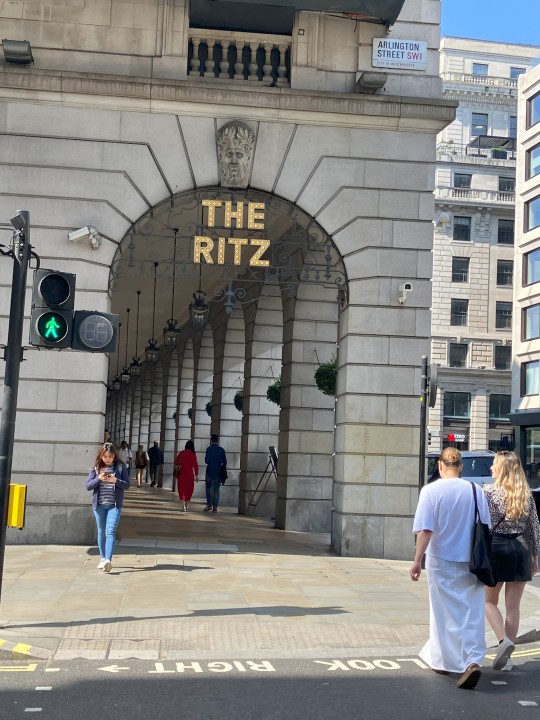
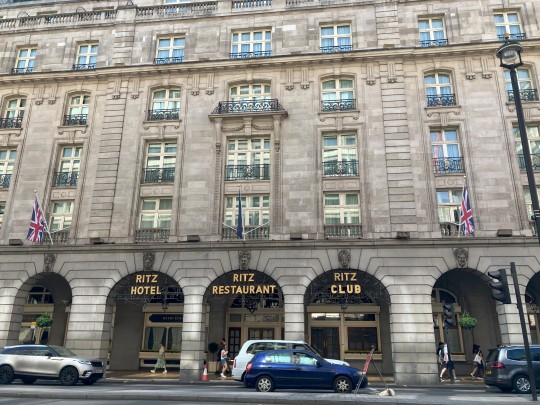

Next up is Battersea Park and the Bandstand. It was a bit of a faff to get there, it's an 8-minute walk from the Battersea Power Station underground and we walked the full length of the park to find the Bandstand, but it was so worth it.
Also filmed here was Gabriel and Aziraphale’s run/jog. Poor Angel is soft scene.
The trees were a little leafier with it being mid-May and the park was very busy because the weather was glorious. They also have a beautiful lake here with herons!



The Heaven & Hell staircase escalators are right over the east side of London in Broadgate Tower, Bishopsgate. I got the overground to Liverpool Street station to get there. It is in a private business building so I politely/awkwardly asked the receptionist if I could take a photo and had to explain about the scene from Good Omens… eek! But he kindly let me snap a photo anyway! (Phew)

The Windmill Theatre was three minutes away from my hotel in Piccadilly Circus, so I wandered up the road to take a photo of where Aziraphale ‘performed on the West End stage’ as Fell the Marvelous. And wasn’t he just?
The scenes weren't filmed here but it was fun to find it anyway.
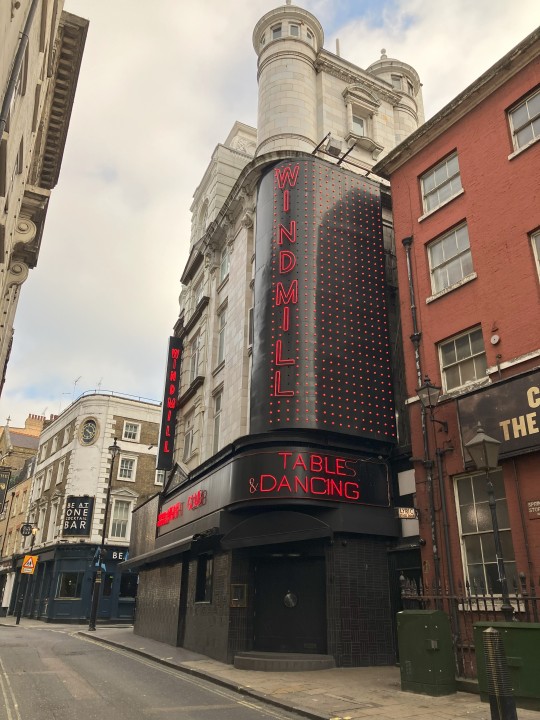
St James’s Park is up next! I sat on their bench and got my friend to take photos of me posing and had fun editing the first photo. Haha! We enjoyed walking through the park, watching the ducks on the lake and had a nosey at Buckingham Palace while we were there.

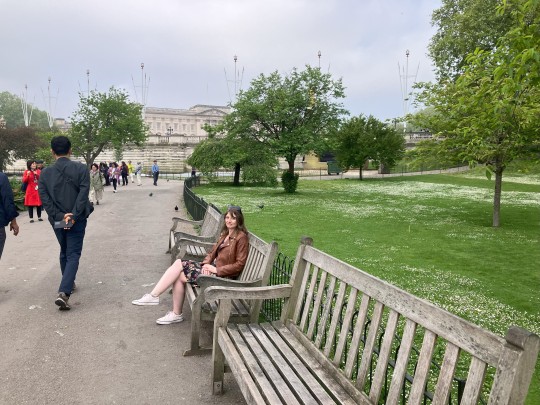
The Duke of York Statue steps are at the other end of St James's Park and were fun to walk up. I smiled to myself as I thought of the scene where Crowley says ‘Well let's have lunch? Hmm,’ and Aziraphale turns around, as it was the first time I realised that these two were more than just friends.

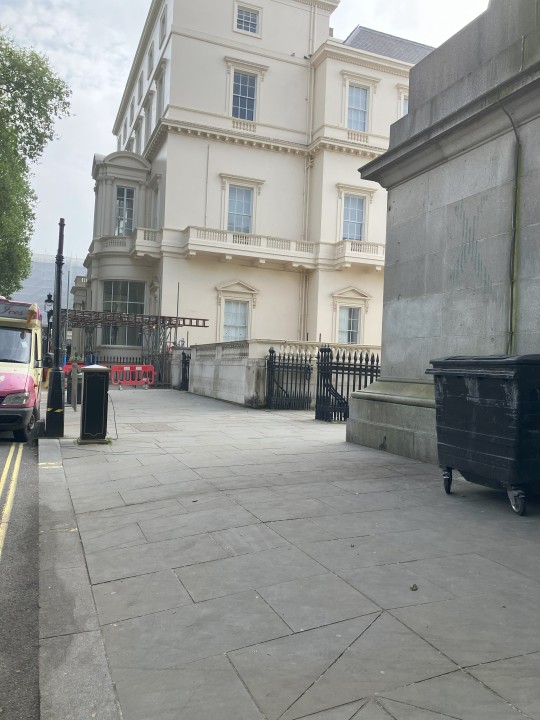
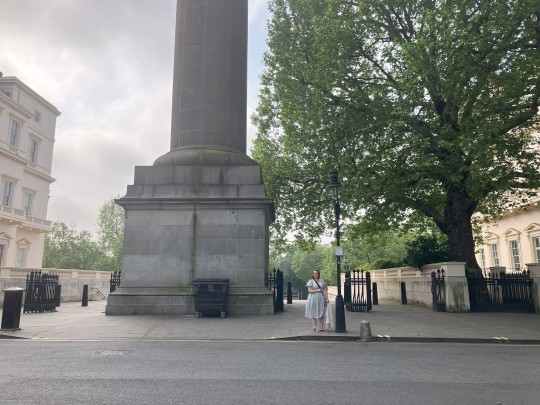
Heaven’s top floor, the Sky Garden in Fenchurch Street near Monument is a very tall building with a botanical garden on the top floor. You can visit the sky garden for free, but you do need to book in advance so it’s best to plan ahead for this one. The views of London are breathtaking from the 35th floor and the tropical plants are fun.

My last stop for this visit was Shakespeare’s Globe Theatre. I booked a tour on the morning I was due to go home. The first tour is 10 am and lasts an hour, so I dashed off as soon as the tour guide was uttering his last words about the gift shop, across London back to Kings Cross to pick up my suitcase from luggage storage and get the 11:48 am train home!
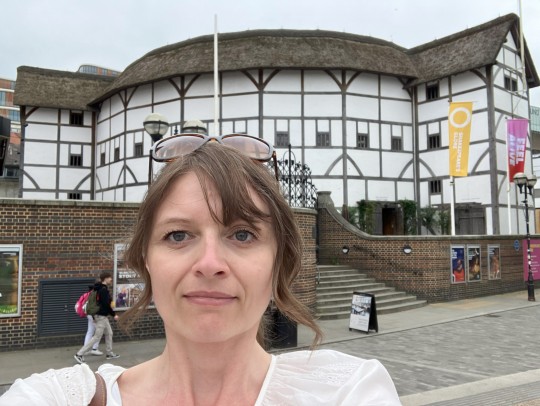
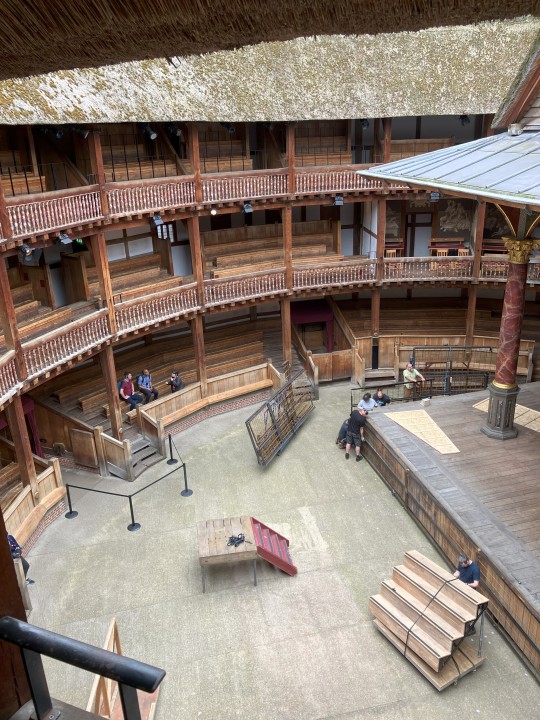
One I missed and could have easily gone to is St Margaret Street where Newton and Shadwell meet, and Shadwell fleeces Newton for a cup of tea with nine sugars and pockets the change. A bit gutted I missed it to be honest – I love Jack Whitehall (I’m back in London with the family in June so I’ll swing by and update then!)
There are also some other locations a little further afield that I might try to visit on a later date, such as Shadwell's and Madam Tracy's flat down Hornsey Road in Islington, Crowley's Flat exterior in Eastfields Avenue, Best Cafe on Garratt Lane where Crowley meets Shadwell, Crystal Palace Dinosaur Park where the ineffable husbands watch Warlock defacing a dinosaur sign and Antonella's Cafe and Bistro where Crowley and Aziraphale are thinking of ideas to track down the antichrist whist Aziraphale eats cake.
Okay, I’m gonna finish up with the man himself. The very kind, very charming, and VERY patient Michael Sheen The reason for my London visit in the first place. Nye was spectacular OBviOUsLy, but he was super generous with his time at stage door for us all. I got a hug and asked him to pass it on to Aziraphale (that angel really needs a hug) and it made him laugh, which made my night!

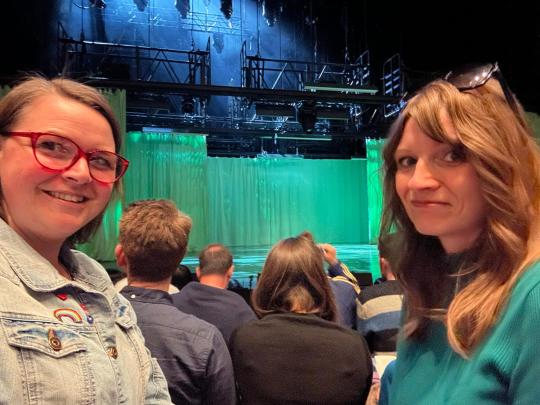

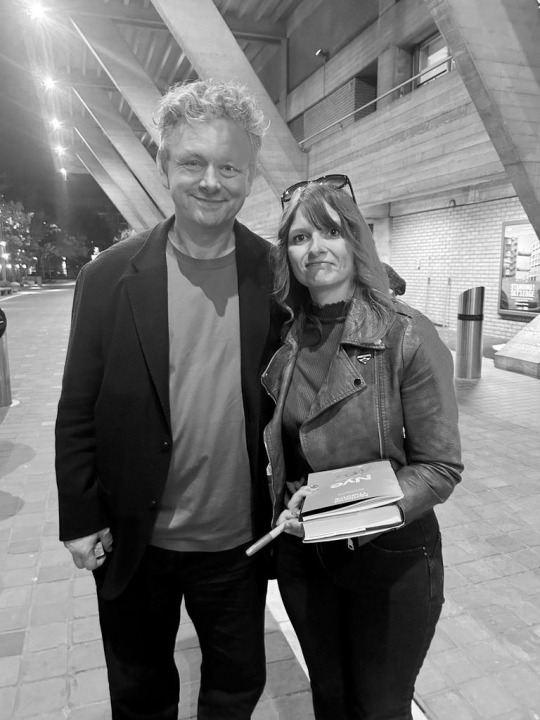
Check out my reblog for extra locations when I visited London again a month later, and for a hilarious bonus photo of.... Gabriel??!
Here’s the wonderful map I used -
from this website:
#good omens#good omens filming locations#good omens london#good omens tour#ineffable husbands#aziracrow#crowley#aziraphale#neil gaiman#michael sheen#david tennant#good omens locations#nye#Shakespeare globe#battersea park#st james's park#the ritz#Berkeley square#soho#mayfair#sky garden#windmill theatre#good omens travel
124 notes
·
View notes
Text

On December 25th in the year 1319 a two year truce between Scotland and England began.
This little known peace treaty is often overlooked, probably due to the Bruce’s government issuing the Declaration of Arbroath the following year.
After Bannockburn King Edward II of England never forgot his humiliation, and he threatened war against Scotland. The Bruce got there first, raiding south as far as York in a bid to capture prisoners to be held for ransom. Edward also had his troubles at home with a trebellion.
The King was also talking to some of the great Northern lords and it looked as if they would do a separate deal with the Bruce to stop him destroying their land. Thomas, Earl of Lancaster, was one of the rebel barons but paid for it with his life after the Battle of Boroughbridge was won by forces loyal to Edward.
Encouraged by ending the civil war in England, Edward came north with a great army, but Bruce deployed the same tactics he had used prior to Bannockburn, destroying anything that could be of use to the English, who were forced to retreat when famine and disease broke out.
In September 1319 The Bruce won a decisive battle at Myton in Yorkshire
Earlier that year Edward II had moved an army North and laid siege to Berwick in an attempt to recapture it from the Scots. In response the army of several thousand Scots, commanded by the Earl of Moray and the Good Sir James Douglas, bypassed the Northern town and marched through the north of England torching all in their path. Their secret objective lay in Edward’s court at York; where they hoped to abduct Edward II’s wife, the 21 year old Queen, Isabella. On September 20th 1319 they neared York and The Battle of Myton ensued.
The outcome of this unequal contest was never in doubt. Formed up according to their custom in a single division, the Scots uttered together a tremendous shout to terrify the English, the Highland charge began racing towards the men from York, who straightaway began to take to their heels at the sound.
The York contingent was an odd mixture of men thrown together to meet the emergency, including priests and monks losses were reported of 3,000, among them Nicholas Flemyng the city mayor.
For Edward II, already at odds with many English nobles, it was another disaster. Meanwhile the victorious Scottish army retreated back across the border into Scotland carrying their ill-gotten gains and prisoners.
Afterwards Edward was forced to raise the siege of Berwick and ultimately agreed to a two year truce.
193 notes
·
View notes
Text

Rupert Graves has been announced as the audiobook narrator for the upcoming release of "Austen At Sea" by Natalie Jenner.
The author says:
I am so excited to announce that the audiobook for my upcoming novel Austen at Sea will be narrated by British actor Rupert Graves! Graves has appeared in many film, television, and theatrical productions including A Room with a View, Maurice, The Madness of King George, The Forsyte Saga as Jolyon Forsyte and Sherlock as Detective Inspector Lestrade (both from the BBC), and the 2020 Autumn de Wilde film adaptation of Emma as Mr. Weston. Graves’s narration of Austen at Sea is a dream come true for me. As a Canadian suburban teenager in 1985, I remember laughing as hard as I’ve ever laughed in a movie theatre while Graves, as Freddy Honeychurch, ran naked around a pond with the equally bare George Emerson and Reverend Mr. Beebe in the Academy Award-winning movie A Room with a View. Graves’s role as gamekeeper Alec Scudder, with whom Maurice falls in love in the eponymous Merchant Ivory film, had an unforeseen but indelible impact on the writing of The Jane Austen Society – just weeks before I began writing my debut novel, I had attended a screening of Maurice at @tiff_net in Toronto followed by a talk by director James Ivory, and over time I increasingly see its influence on my own work and the character of Adam Berwick in particular. And of course there is the recent adaptation of Jane Austen’s masterpiece #Emma, where Graves’s rich, melodic voice brings the melancholy yet determined whimsy of Mr. Weston to life. I am thrilled that Mr. Graves will be narrating Austen at Sea, with its multitude of characters on both sides of the Atlantic, and am so grateful to @macmillan.audio for arranging yet again the perfect voice for my work. The audiobook releases on May 6, 2025, in tandem with the US hardcover and Canadian paperback, and is available for pre-order now wherever audiobooks are sold!
43 notes
·
View notes
Text
Portrait Beauties of the 1920s

Randolph S. Hewton (Canadian, 1888-1960) • Miss Mary Macintosh • 1924 or earlier
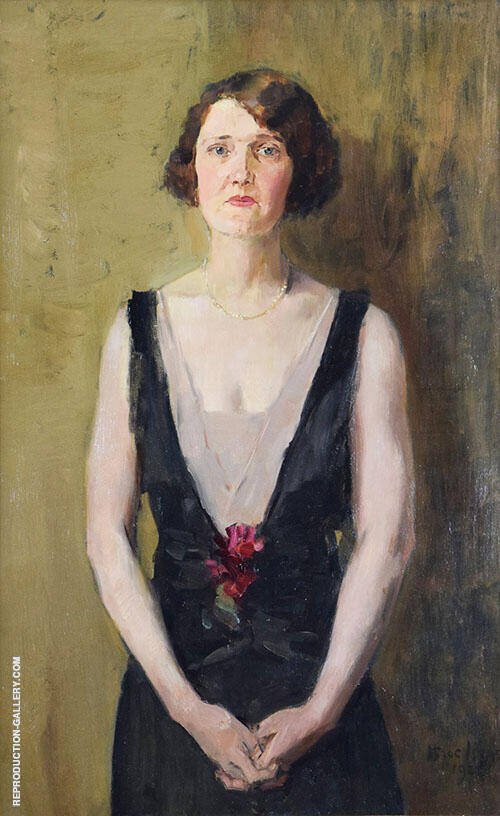
Isaac Israëls (Dutch, 1865-1934) • Portrait of Beulah Watson • 1928

Philippe Swyncop (Belgian, 1878-1949) • Portrait of a Girl in Blue • 1922
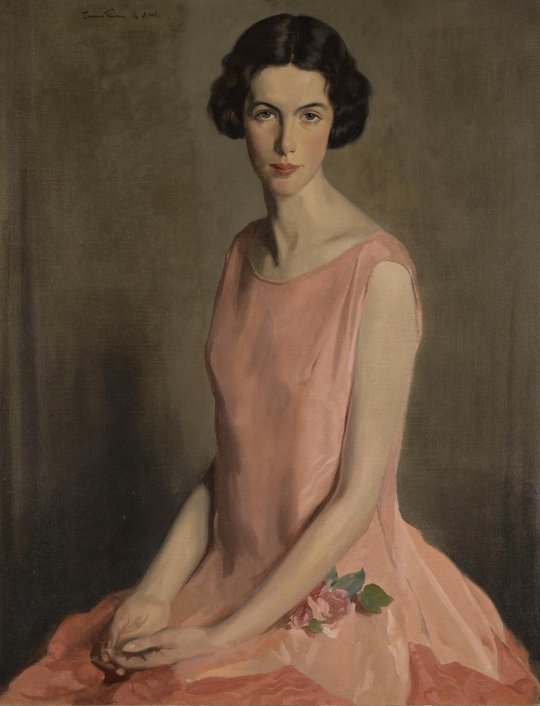
Herbert James Gunn (British, 1893 - 1964) • Portrait of Gwendoline Hillman • 1925

Gerald Festus Kelly (British, 1879–1972) • Edith Teresa Hulton, Lady Berwick • 1920s
#fashion history#art#painting#portrait#female artist#woman artist#female portrait#1920s fashion#women's fashion history#hilda rix nicholas#herbert gunn#gerald festus kelly#philippe swyncop#Isaac Israëls#the resplendent outfit art & fashion blog#art & fashion
13 notes
·
View notes
Text

Arms of The Most Noble James FitzJames, 1st Duke of Berwick.
13 notes
·
View notes
Text
the problem with being a (computer) detective is that it can easily put you in a conspiracy mood.
SEE in the Wheel of Fortune (2010, Wii) datafiles, there's an unused set of puzzles (possibly from a cut minigame), which lists two persons:
PERSON|CAPTAIN JAMES T KIRK PERSON|RAY BERWICK
Kirk is obvious but who is Ray Berwick? a quick google will tell you that he was an animal trainer. He worked on 20 movies & TV shows from 1963 to 1988. His first credit on IMDB? he was the bird trainer for Hitchcock's The Birds. He died in 1990 at the age of 75.
What the fuck was he doing in an unused set of puzzles in a Wii game? He's not exactly a household name. I was half expecting to google him and find out Ray Berwick was one of the developers.
Was one of the developers just watching Gremlins and saw his name under "animal coordinator"? Were they related to Ray Berwick? WHY IS HE IN WHEEL OF FORTUNE? (except he's not in it. He's on the disk, but not included in the playable game itself, because they apparently cut the minigame his name appeared in)
229 notes
·
View notes
Text
Remember, remember.
@hp-12monthsofmagic
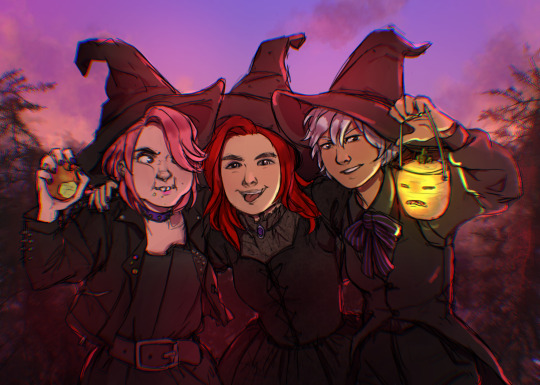
Traditionally, the magical community doesn’t observe Bonfire Night.
In the late 16th century, King James VI instigated the North Berwick witch trials - the first major persecution of witchcraft in Scotland. On the night of Halloween 1590, King James VI and his bride, Anne of Denmark, were caught up in a storm on the voyage back to Scotland. This misfortune was blamed on witchcraft, which was the start of trials which would last two years.
So it was no surprise that when in 1605 the Gunpowder Plot failed to take out the King, it wasn’t particularly a cause of celebration for magic-users. Their memories and thoughts remained with those persecuted during the trials, tortured til they either confessed or died.
Halloween on the other hand, with roots in Samhain/Samhuinn, is considered the Witches New Year. It’s observed from October 31st to November 1st, and it’s Hogwarts’ biggest event.
People are encouraged to wear their “witchiest” clothes, complete with witches hat.
Bonfires are lit
Turnip lanterns are carved to ward off evil spirits
There’s games involving treacle scones and apples. Braver students can try some of Hagrid’s treacle scones.
Prof Trelawney volunteers to do readings for students, which are very popular amongst couples. Break-ups peak around this time of year.
Among the merriment and festivities, it’s also a time for remembrance of those lost. The time of year where the veil between the world of the living and the world of the dead is at its thinnest.
#hogwarts mystery#nymphadora tonks#tulip karasu#hphm mc#freyja young#remember remember when king james decided witches could control the weather and then published a book on magic that endorsed witch burning?#which shakespeare then used to guide his writing of witchcraft in macbeth?#hp12mom#hp-12monthsofmagic
98 notes
·
View notes
Text
There have been attempts, at the time and more recently, to argue that the outcome [of the Armada campaign] was just due to luck, or weather, or more in the nature of a draw, since Spain rebuilt a substantial navy in the early 1590s. Those arguments are unconvincing. The campaign of summer 1588 was an outstanding English victory. It was hard fought, and by the end, the English were almost out of ammunition. However, Drake’s fireships were a brilliant tactical device and Gravelines must count as one of the greatest English naval actions. It is clear from the profusion of pamphlets across Europe that everyone accepted Spain had been resoundingly defeated. Philip II never again considered an invasion of England by combined sea and land forces: the best his rebuilt navy could do was to raid Cornwall. The outcome of 1588 was a European turning point. England’s successful resistance showed that Spain was not invincible, encouraging Protestants in the Netherlands and France to continue their struggle. The Dutch threw off Spanish rule and Henri of Navarre became king of France, bringing religious peace and economic recovery. The young James VI of Scotland, bound to England by the treaty of Berwick in 1586 but alienated by the execution of his mother Mary Queen of Scots in 1587, shrewdly seized the Armada moment to emphasize his claim as Elizabeth’s heir. He wrote at the height of the crisis of summer 1588, assuring her of his support “as your natural son and compatriot of your country”.
Pauline Croft
16 notes
·
View notes
Text
Anne conceived again early in 1534. Henry excitedly ordered a new cradle from Master Cornelius Hayes, his jeweller and silversmith, but by July the Queen miscarried. This meant the only legitimate male heir in line of succession to the English throne that summer was James V, for in March 1534 Charles Brandon lost his only son, Henry, Earl of Lincoln, who died nine months after his mother's funeral. In 1532 James had issued an ultimatum that if his uncle did not stop befriending the Earl of Angus, he would be prepared to go to war with England. Margaret had offered to mediate between her son and brother. She was certainly influential in bringing about the Treaty of Berwick, which was signed on 12 May 1534. Both sovereigns promised to observe peace between England and Scotland for as long as they lived. James also formally recognized Henry's marriage to Anne Boleyn.
The Sisters of Henry VIII, Maria Perry
8 notes
·
View notes
Text
London pt. 13 - some Good Omens stuff

Berkeley Square ☺️ I had obviously wanted to visit it anyway, but I wasn't even looking for it on my first afternoon. The light was so beautiful. Sadly, there were indeed no nightingales in sight.

The Duke of York Steps

I don't know if there were any angels dining there at the time 😉


Reading Sir Terry Pratchett in St. James's Park. Nature is healing.

Berwick Street in Soho ☺️ Did you know there actually is a record shop there? It's called Reckless Records, they also have some CDs and even a few cassette tapes. I also had a delicious crêpe in a café there, Aziraphale would have loved it haha. I was sitting at the window, looking out across the street. While I was waiting for my food, a woman walked by with two little dogs, a white one and a black one. The brainrot is bad folks. 😅
4 notes
·
View notes